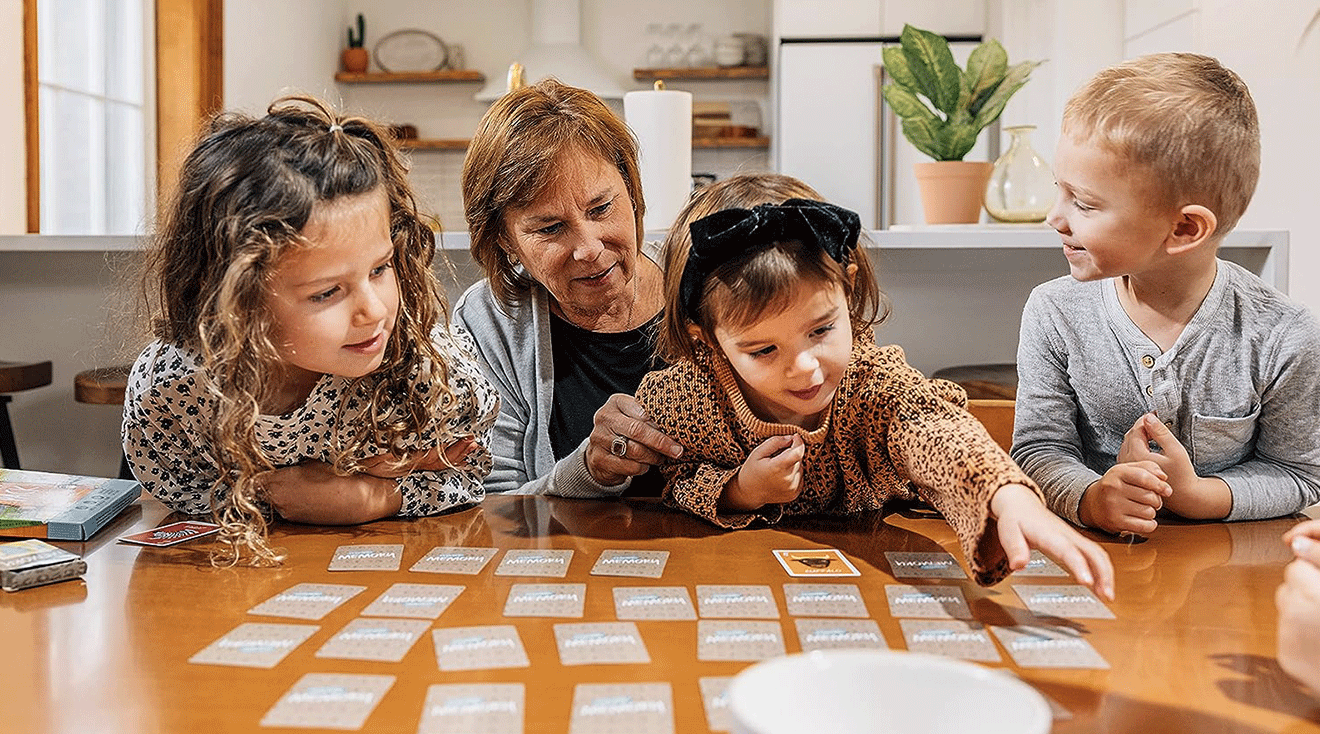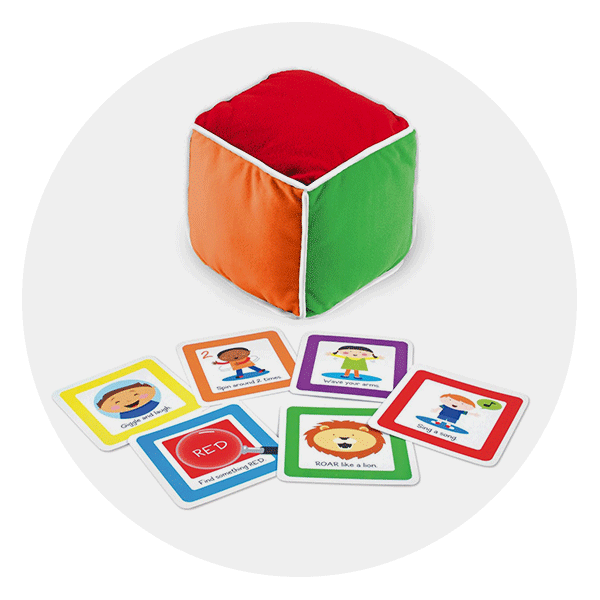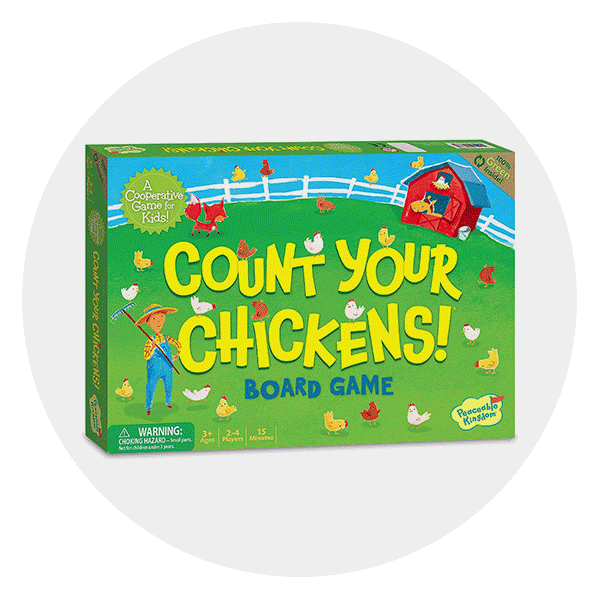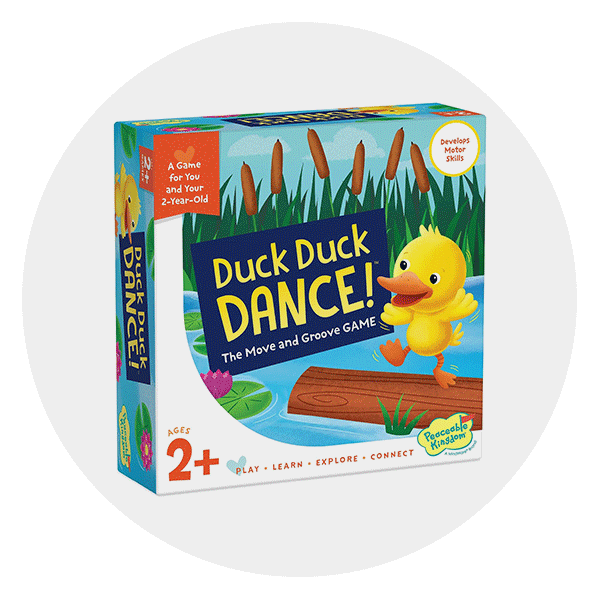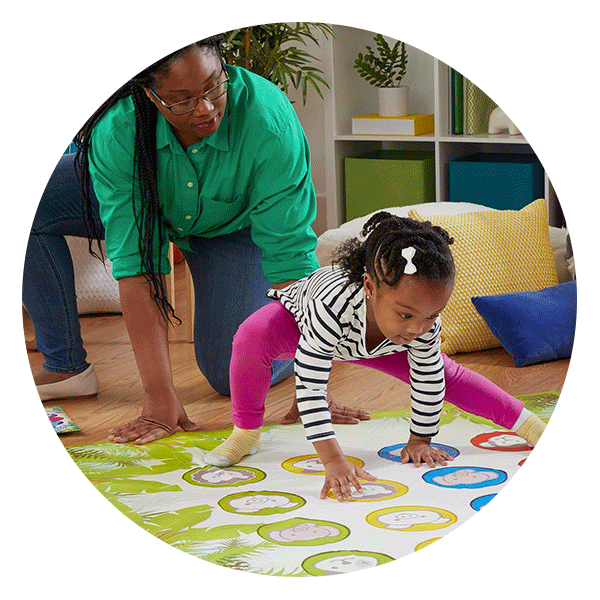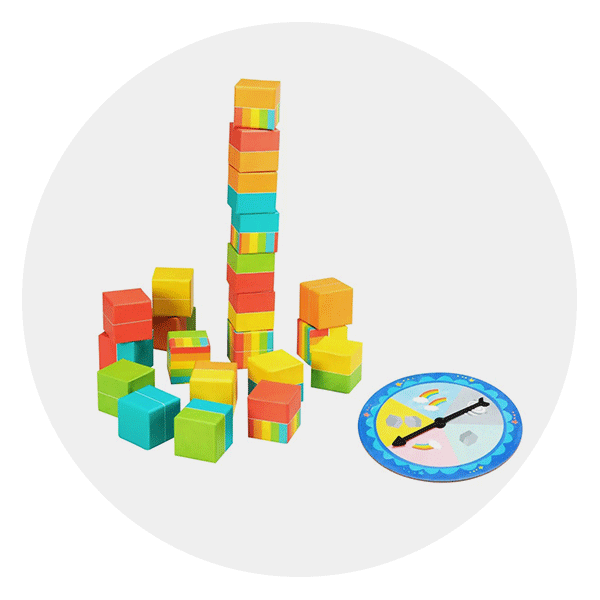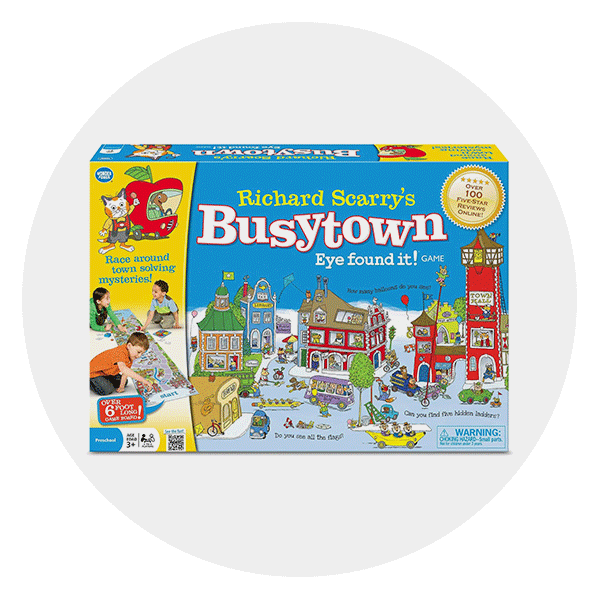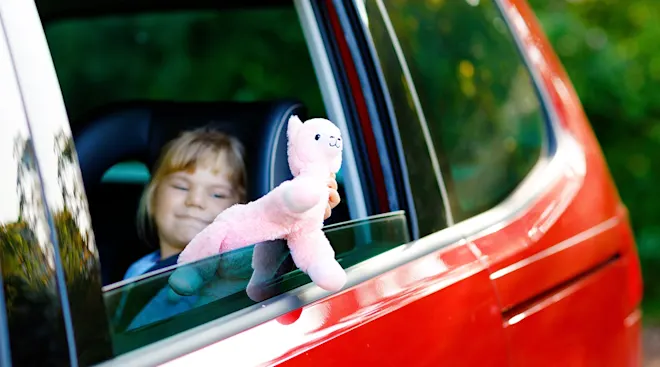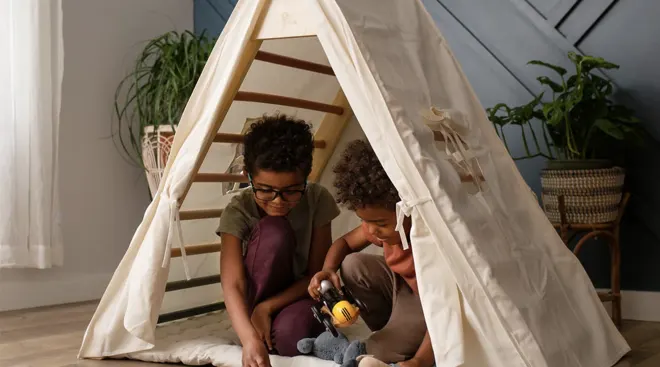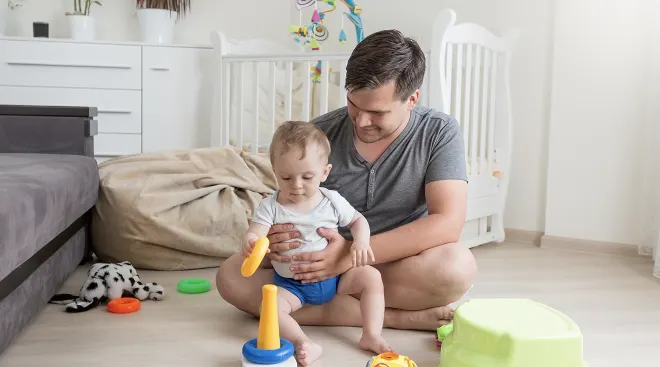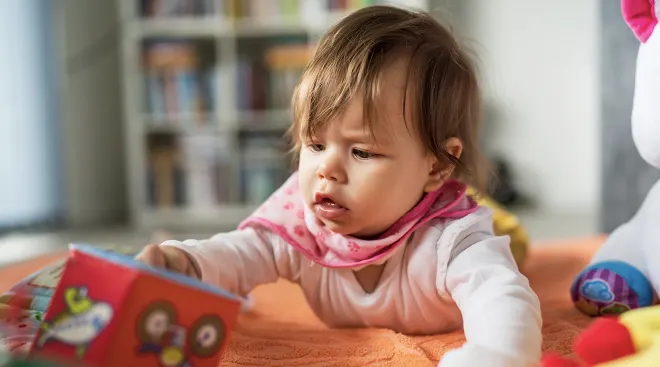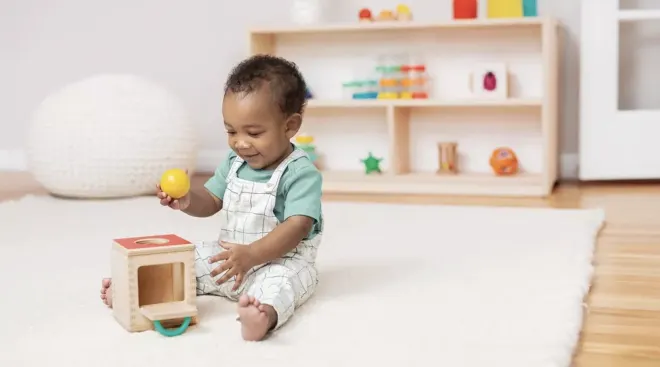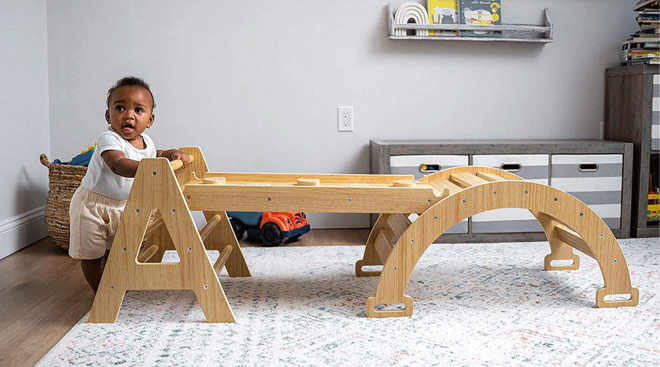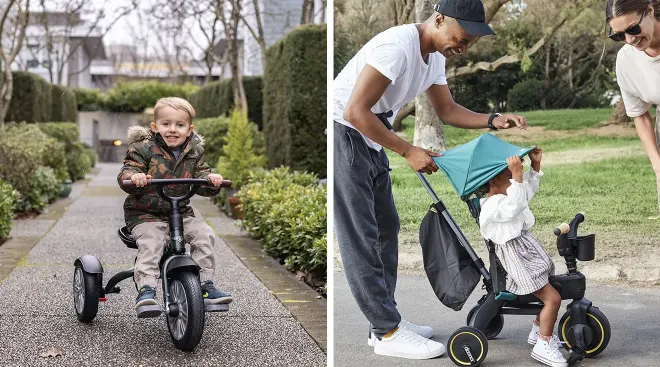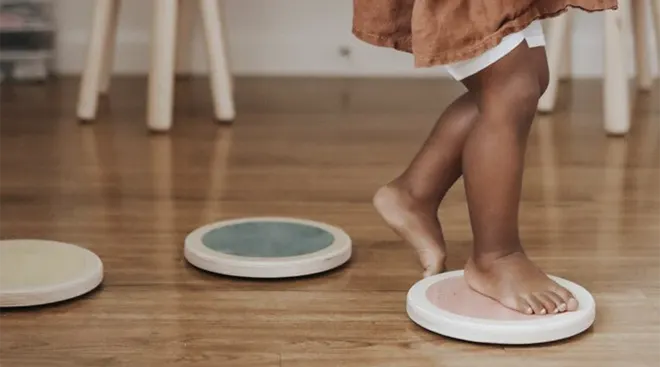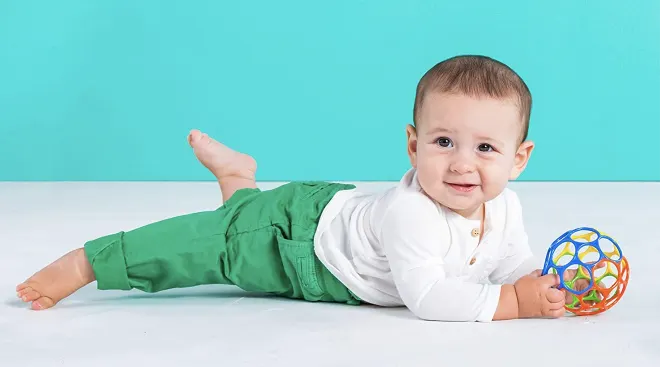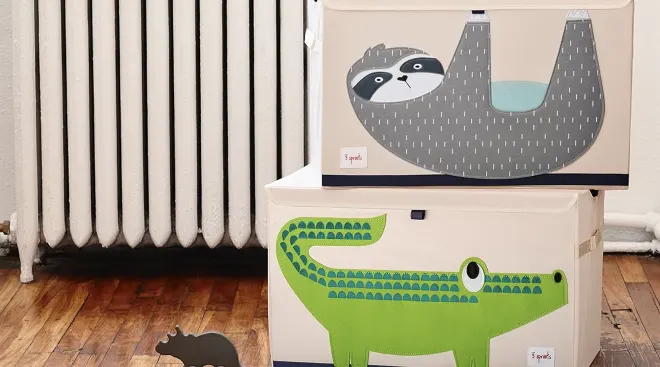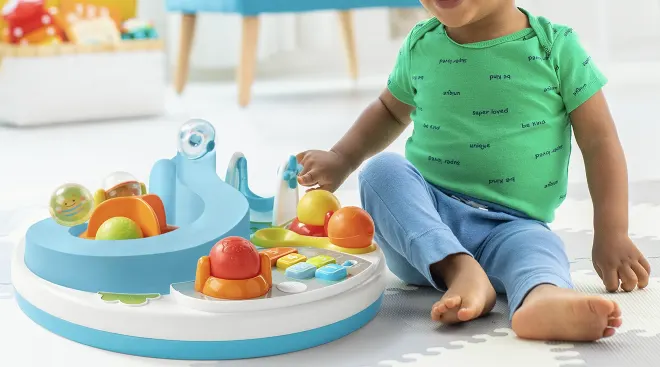The Best Toddler Board Games for Family Fun
There’s nothing like a good ol’ game to keep the family entertained—especially on days when you’re stuck indoors. And while you’re welcome to dream up an activity on your own, sometimes it’s just easier to have a game with all the rules already organized for you. Shopping for the best games for families to play together? We’ve got you covered with a mix of educational, cooperative and just-plain-fun options. Below, you’ll find the best toddler board games, plus some of the best family card games and floor games too. From popular new releases to all-time classics, we’re delivering ideas and nostalgia all in one. You may even feel inspired to start a weekly family game night.
What makes the best family card or board games, well, the best? Really, a lot of it comes down to personal preference, since not all kids (or parents!) enjoy the same activities. But there are still a few key factors to keep an eye out for—factors that we used to help determine our list:
-
The age recommendation: This is really important for two reasons. The first: It gives a sense of the game’s difficulty level. You don’t want to frustrate your child with a game they’ll struggle to follow. The second: Many of the best family board games come with small parts that might not be safe for toddlers under the age of 3.
-
How long it takes to play: Toddlers have very short attention spans. Plus, as parents, our patience can run pretty thin. Look for games you can learn fast and finish fast—the latter of which really comes in clutch if your munchkin insists on another round.
-
How many people can play it: Think about your family. Will you be playing as a parent-child duo, or inviting all the cousins over for a family game night? We’ve spotlighted the best family board games (and card games, etc.) for two, four and even more players.
-
The skills it helps develop: Not everything has to be ultra-educational, but many of the best family board games involve developmental tasks and teachable moments. Whether you’re looking to advance your kid’s motor skills, show them how to play fair and lose gracefully, develop their reading and counting skills or encourage their imagination, there are options on this list for you.
Start the family fun young with these entertaining and educational games totally appropriate for your little one. We’ve found the best toddler board games, card games and even included some staff picks. Because the best family board games are those that everyone can understand and enjoy.
Non-competitive toddler board game
True toddler board games (for children under 3) are actually pretty hard to come by. But rest assured, there’s still this entertaining card game you can play with your munchkin. Roll the big, plush, toddler-friendly cube, pick a card that corresponds with the color it lands on, then just do whatever the card says! Prompts include “roar like a lion” and “find something blue.” Everyone’s a winner in this top family “board” game for tots—there’s no competition, just educational fun.
Age rating: 18+ months | Players: 2
Candy-inspired toddler board game
What can we say? Candy Land is one of the best family board games of all time. It’s another go-to beginner game thanks to its easy instructions and cute theme. This version follows the same basic premise as your beloved childhood board, but with fresh graphics. It’s designed for children over the age of 3, but with a little guidance young toddlers can get involved too.
Age rating: 3+ years | Players: 2 to 4
“This classic game is a favorite with my 2- and 5-year-old. They love all the delectable candy imagery, but more than that, the game play is fun, quick and easily understood. My toddler needs just a bit of guidance on which square to move to (she's apt to pick any square of the correct color, not necessarily in order), but she loves selecting the cards and moving her figurine all by herself. My eldest has been an independent and enthusiastic player since she was 3!” – Ashlee, mother of two and content director at The Bump
Cooperative toddler board game
German brand HABA is known for its beautifully crafted wooden toys—and this toddler board game is no exception. The set includes chunky wooden pieces that are easy for little hands to grasp and manipulate across the board. Plus, the game style is cooperative (meaning you work together against the game, instead of against other players), so it fosters social skills, on top of basic math skills. Working as a team, players roll the dice and each try to pick fruit from the trees before the raven reaches the end of the path. Bonus: The wooden fruit can double as play food for imaginary games.
Age rating: 2+ years | Players: 1 to 4
Counting board game for toddlers
Introducing another egg-cellent toddler board game: Count Your Chickens. This cooperative counting game encourages players to work together and help mother hen collect her chicks and bring them safely back to the coop. And once the task is completed, everyone wins—hooray! No reading is required to play this game, making it perfect for younger kids.
Age rating: 3+ years | Players: 2 to 4
“I love the way this game encourages players to collaborate instead of competing with one another. It gave my daughter practice counting, and she enjoyed helping the babies find their mama.” – Daniel, father of one and associate director of e-commerce content at The Bump
Memory card game for toddlers
Hone your memory skills with this classic card game the whole family can enjoy. Designed for ages 2 and up, it includes 24 thick cardboard tiles that are easy for tiny hands to grasp. This set features colorful illustrations of airplanes, trains and other vehicles, but there’s tons of options to choose from including an adorable animal set. The aim of the game is simple: Flip the cards over, then from memory find the most matching pairs to win. Simple, effective and fun!
Age rating: 2+ years | Players: 2 to 4
“This game brings back cherished childhood memories for me (pun intended), and now the next generation is inheriting a love for the game. Both of my girls started playing when they were 2 years old—we'd just use a small grouping of cards to make it more manageable. As kids get older, you can add more cards to the mix to increase the challenge. Find a set with toddler-friendly graphics to up the appeal.” – Ashlee, mother of two and content director at The Bump
Dancing board game for toddlers
Here’s another one of those rare toddler board games that are appropriate for the under 3 age set. This game gets kiddos up and active with fun dance moves, all showcased by a cute duck, no less. You roll the dice, do the dance moves they prescribe and flip over one of the pond “audience members” on the board—once you’ve revealed the entire audience, the game is done.
Age rating: 2+ years | Players: 2 to 4
Bedtime-inspired toddler board game
Struggling to get your little one on board with the nightly routine? The aim of this game is to get the animal characters tucked up in bed. Aside from making bedtime tasks—like brushing teeth and putting on PJs—sound like fun, this game is designed to enhance your little one’s vocabulary. Better yet, there’s three different ways to play the game depending on your child’s skill level.
Age rating: 2+ years | Players: 1 to 3
Classic board game for toddlers
Once your kid turns 3, the opportunities really expand. Many of your childhood favorites are age-rated for older toddlers and preschoolers! Take Chutes and Ladders, one of the best beginner family board games around. It doesn’t require any reading, but it does help them practice their counting and number recognition.
Age rating: 3+years | Players: 2 to 4
Imitation game for toddlers
Your little monkey will be hopping with joy when you play this toddler board game together. The play set includes 40 cards with prompts for fun actions and activities—such as hugs and high fives. To play, simply draw a card, do the action then place the card on the tree. It’s a non-competitive game that doubles as a great bonding activity for families.
Age rating: 2+ years | Players: 2
Color-matching toddler board game
This best-selling, award-winning game is one of the best toddler board games around. Good for ages 3 and up, it reinforces color learning and helps little ones develop matching skills, strategic thinking, turn-taking, hand-eye coordination and fine motor skills. The goal of the game is to help squirrels amass some acorns—just spin the spinner, pick up the matching acorn with the included Squirrel Squeezer and place it on your log. The first person to collect five acorns wins.
Age rating: 3+ years | Players: 1 to 4
Flashcard game for toddlers
If your kid’s a fan of the First 100 Words baby book, they’ll love this card game. Educational and fun, this flashcard set features photos of everyday objects and animals that are instantly recognizable to tots. To play, roll the soft, chunky dice to select a category and find the matching pairs to win. If your little one isn’t the competitive type, you can use the cards to practice new vocabulary.
Age rating: 2+ years | Players: 2 or more
Two-in-one toddler board game
Concentrating on a board game can be tough for active tots—but with junior Twister they can exercise their mind and burn off excess energy while they play. The animal-based adventure game has two levels for newbies and advanced players. With level one, kids spin to move along the safari trail outlined on the floor mat. As they take turns, each child has an opportunity to discover new colors and reenact rawr-some animal sounds. Ready to level up? Flip the mat over for a traditional game of twister.
Age rating: 3+ years | Players: 2 to 4
Farmyard-inspired toddler board game
Simple toddler board games are often the best. Case in point: This farm-themed matching game by Orchard Toys. Lay out all of the cards and let your child match the two halves to reveal their favorite animal. As you play, say the names of the animals out loud to help grow their vocabulary.
Age rating: 18+ months | Players: 1 to 4
Building toddler board game
Tumbleos take traditional dominos to new heights! Kids spin the dial to determine whether they’ll add a brick to the tower or take one away. The first player to stack all of their blocks wins, but beware this tumbling tower could tip over at any time!
Age rating: 3+ years | Players: 2 to 4
Large toddler board game
This preschooler and toddler board game goes the extra mile—the board is six whole feet of fun! But don’t worry, despite its size, it only takes 15 to 20 minutes to get through. Players “race” around an eye-catching town searching for hidden objects. This helps develop your child’s attention to detail; plus, it’s seriously entertaining. In addition, there are plenty of chances for players to work together. We love a family board game that emphasizes the importance of teamwork.
Age rating: 3+ years | Players: 1 to 4
Toddler card game multipack
Searching for the best family card games to introduce at a young age? This starter pack includes all of the most popular options: Go Fish, Crazy Eights, Memory, Slap Jack and Matching. Pull out a new deck every family game night for weeks to come. Or, play multiple games in one sitting—after all, they only take 15 minutes or so to finish. And you only need two players to enjoy them.
Age rating: 3+ years | Players: 2 or more
We get it—there’s a surplus of toys on the market, making it difficult to determine which playthings are the best fit for your family. To streamline your decision-making process, our goal is to do the bulk of the research for you, so you don’t have to spend hours scrolling through online retailers.
To decide which toddler board games are the best options on the market, we leverage our familiarity with leading toy brands to make sure items are from reliable manufacturers. We read user reviews to get the lowdown on how these products work for kids, and typically don’t consider anything with less than an average four-star rating. And since many of us are also parents, we rely on our writers’ and editors’ experience using items with their own families.
Interested in learning more about our editorial process? Read about how our team develops and reviews all articles here.
Plus, more from The Bump:
Navigate forward to interact with the calendar and select a date. Press the question mark key to get the keyboard shortcuts for changing dates.

































